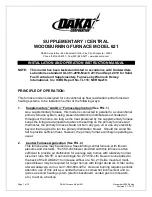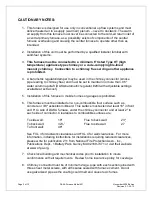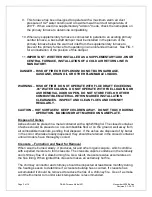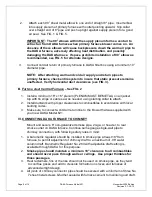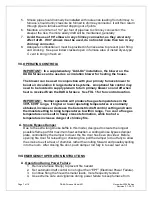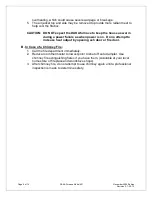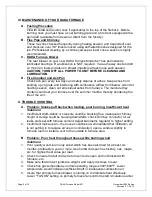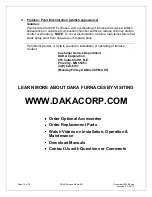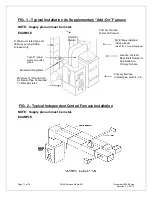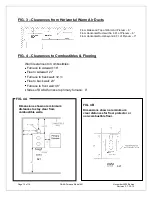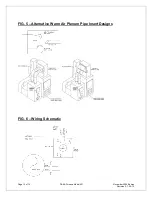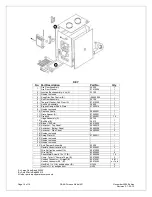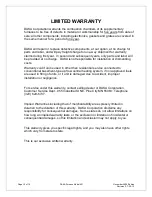
Page 1 of 15
DAKA Furnace Model 621
November 2009 Edition
Revision 2: 7-20-12
SUPPLEMENTARY / CENTRAL
WOODBURNING FURNACE MODEL
621
DAKA Corporation • 955 Industrial St NE • Pine City, Minnesota • 55063
Phone (320) 629-
6737 • Fax (320) 629-3677 • www.dakacorp.com
INSTALLATION AND OPERATION INSTRUCTION MANUAL
NOTE: This model has been tested and listed in accordance with Underwriters
Laboratories standard UL 391-2010-March 2010 and Sept. 2010 for Solid
Fuel Central and Supplementary Furnaces by Warnock Hersey
International, Inc. ICBO Report No. TL116; NER Qa219.
PRINCIPLE OF OPERATION:
This furnace model is designed for conventional up flow residential central forced air
heating systems, to be installed in either of the following ways:
1.
Supplementary "Add-
On” Furnace Application (See FIG. 1)
As a supplementary furnace, this model is connected in parallel to a conventional
primary furnace system, using present ductwork to distribute wood-heated air
throughout the home. As long as the heat produced by the supplementary furnace
keeps the living area temperature above the setting on the primary furnace wall
thermostat, the primary furnace should not burn any gas, oil or use any electricity
beyond that required to run the primary distribution blower. Should the wood fire
fail to provide sufficient heat, however, the primary furnace will begin operating as
usual.
2.
Central Furnace Application
(See FIG. 2)
This furnace also may be used as a freestanding central furnace, with its own
plenums and ductwork. The 550-cfm blower provided with this furnace is often
sufficient to provide air distribution for average size homes with relatively normal
size duct runs. NOTE: A second single No. 273 550-cfm blower can be added to
the back of the DAKA 621 to increase airflow or a No. 218 side mounted, multi-
speed blower may be required for larger homes with longer ductwork. Order online
at www.dakacorp.com or call 1-800-884-3252. As wood burning requires periodic
attention, use of this unit as a central furnace is somewhat inconvenient and re-
quires a second heating system (electric baseboard, vented gas room heaters,
etc.) to act as a backup.

